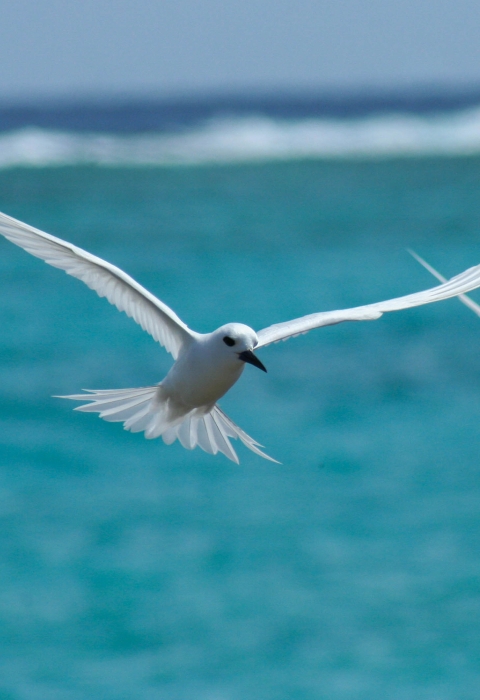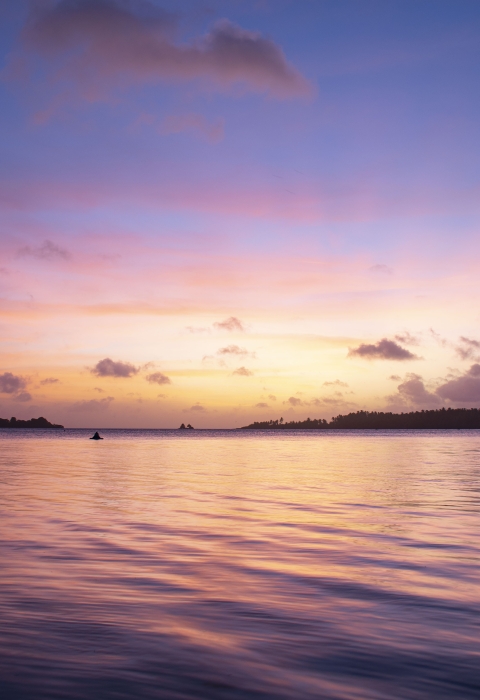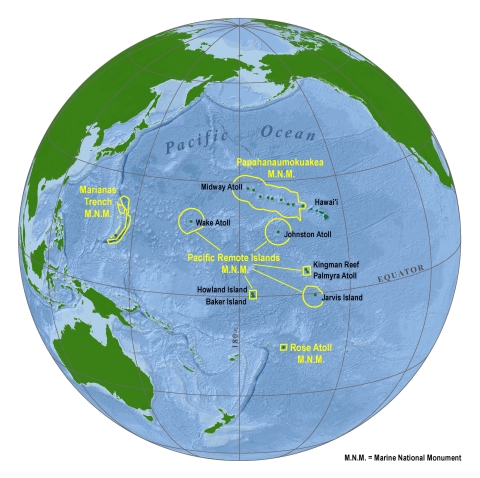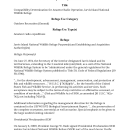Visit Us
Due to its remote location, the Pacific Remote Islands Marine National Monument is not easily accessible to the general public. Palmyra Atoll National Wildlife Refuge is the only refuge that allows recreational access with a visiting vessel Special Use Permit. Access to all other refuges within the Monument are primarily limited to management activities or research through the use of a Special Use Permit.
Location and Contact Information
About Us
The Pacific Remote Islands Marine National Monument was established on January 6, 2009, by President George W. Bush under the authority of the Antiquities Act of 1906, but expanded to its current size on September 25, 2014, by President Barack Obama. The Monument represents one of the last frontiers of scientific discovery in the world and is a safe haven for Central Pacific biodiversity. The Monument and the national wildlife refuges within it protect entire ecosystems – from coral reefs to deep seamounts, abyssal plain, and volcanic features.
The national wildlife refuges with the Monument are:
What We Do
Managed in partnership with the National Oceanic and Atmospheric Administration, the Service is dedicated to protecting and conserving the biodiversity that enriches the areas that make up the Pacific Remote Islands Marine National Monument. The PRIMNM is one of five Marine National Monuments co-managed by the Service.
Our Organization
The PRIMNM Community Group
The U.S. Fish and Wildlife Service and NOAA have a continued partnership with the Udall Foundation to enlist selected members of the community to form the Pacific Remote Islands Marine National Monument Community Group. This group provides consultation to our agencies on Monument management, care, and effective stewardship, while also providing a forum to discuss ideas and opportunities regarding the management of the Monument, represented in the Monument Management Plan.
Our Species
The Monument is home to one of the largest and most pristine collections of tropical islands, coral reef, seamounts and deep sea protected areas on the planet. Species such as sea turtles, marine mammals, whales, sharks, and manta rays have large migration and foraging ranges that exist throughout the expanded Monument.
Home to seabirds, shorebirds, rare plants, land crabs, vibrant coral reefs, sea turtles, whales and dolphins, sharks, manta rays and even the plankton that are the basis of ocean food-web; thousands of species - some that have large migration and foraging ranges - exist throughout the expanded Monument.
Our Library
Here you will find library collections containing a variety of U.S. Fish and Wildlife Service publications, reports, fact sheets, media and documents along with other reference material.
Get Involved
You can support your the Pacific Remote Islands Marine National Monument or the national wildlife refuges within it by joining organizations such as the National Wildlife Refuge Association that actively supports and advocates for the National Wildlife Refuge System. Volunteer opportunities can also be found at volunteer.gov.
Projects and Research
Since the establishment of the Monument, the Service has worked with partner agencies in maintaining some of the most protected and biodiverse areas of the Pacific Ocean. The Monument contains significant objects of scientific interest and was designated to protect and sustain many endemic species, including corals, fish, shellfish, marine mammals, seabirds, water birds, land birds, insects, and vegetation. These areas also contain pristine deep sea and open ocean ecosystems with unique biodiversity, and approximately 348 seamounts that provide habitat for colonies of deepwater corals that are many thousands of years old.



